Cold soba noodles are a Japanese summer staple… when the weather gets really hot, these buckwheat noodles make a very refreshing and light meal (especially when you don’t feel like eating anything too hot or heavy). This type of soba is served with various toppings (usually nori and chopped green onion), along with a side of dipping sauce. I also like to add strips of Japanese omelet (made with dried fish flakes) and sliced fish cake.
Most of the items you need to make this dish can be found in the international aisle of the regular supermarket: dried soba noodles, Kikkoman brand “Memmi” noodle soup base, and seasoned nori. Some supermarkets sell Japanese fish cake in the refrigerated section near the tofu (look for the half cylinder of pink and white fish cake labeled “kamaboko“, which is vacuum sealed in plastic on a small wooden plank).
Instead of the pink kamaboko, I sometimes use the fried fish cake with burdock root: “Gobo Tenpura” (see the picture below) – which is easier to find at an Asian supermarket like 99 Ranch or Mitsuwa. If you can’t find the katsuobushi (dried shaved bonita fish) you can omit it – it is not essential – but if you want to get it, I usually buy it at 99 Ranch or Mitsuwa.
The dipping sauce for the soba noodles is made with bottled “mentsuyu”. Mentsuyu is a concentrate made from a combination of soy sauce, mirin, sake, kombu (kelp), and katsuobushi (dried bonito fish flakes) – it can be diluted in various proportions (with water) to make a flavorful soup base for noodle soups like udon, or can be used to make dipping sauces for noodles/tempura/etc. I prefer the Kikkoman brand mentsuyu, “Memmi” (see the picture below) – and I usually have a bottle in the refrigerator (it keeps for a really long time). (The reason why I prefer this brand is because it is made with Kikkoman soy sauce, and I’m a soy sauce snob! When you grow up with a particular product (like Kikkoman soy sauce) – you get used to the taste, and anything else just doesn’t measure up!)
Zaru Soba (2-3 servings):
- 2 bundles of Soba Noodles (about 8 oz dry)
- 1 small packet of seasoned nori
- 2 green onions
- 1/2 package gobo fishcake or pink kamaboko
- 2 eggs
- 1 tsp. soy sauce
- 1/4 c. Katsuobushi (dried shaved bonita fish)
- 1 T. canola oil
- 1/4 c. Kikkoman Memmi Noodle Soup Base
- 1 c. cold water
- grated ginger. 1/2 tsp. per person (optional)
1. First, beat the eggs, soy sauce, and katsuobushi with a fork.
2. Heat the oil in a frying pan, then pour in the egg mixture. Heat until bubbly and the bottom is solidified, then flip.
3. After about 30 seconds (or when the bottom is cooked), remove from the pan and allow to cool on paper towels (to absorb the extra oil).
4. Set some water in a large pot to boil. Mix the Memmi noodle soup base with the 1 c. cold water. (Recommended ratio for Zaru soba sauce is 1 part Memmi to 4 parts water). You can add 1/2 tsp. grated ginger into an individual portion of sauce if desired.
5. Using kitchen shears, cut the nori into strips.
6. Slice the fried egg, gobo fishcake (or pink kamaboko), and green onion.
7. Once the water is boiling, add the dried soba noodles and cook for about 5-8 minutes until done.
8. Drain the noodles, and rinse immediately with cold water. You can add some ice to chill the noodles even further.
9. Place the cold cooked soba noodles onto individual plates, top with the fried egg, fish cake, green onion, and shredded nori. Serve with an individual side of sauce. To eat, take a portion of noodles with topping, dip into the sauce, and eat!

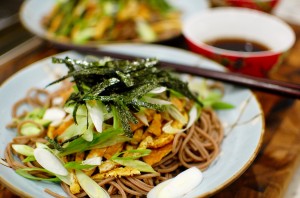
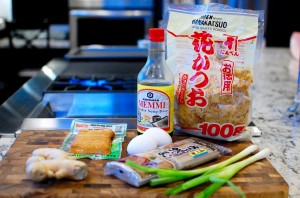
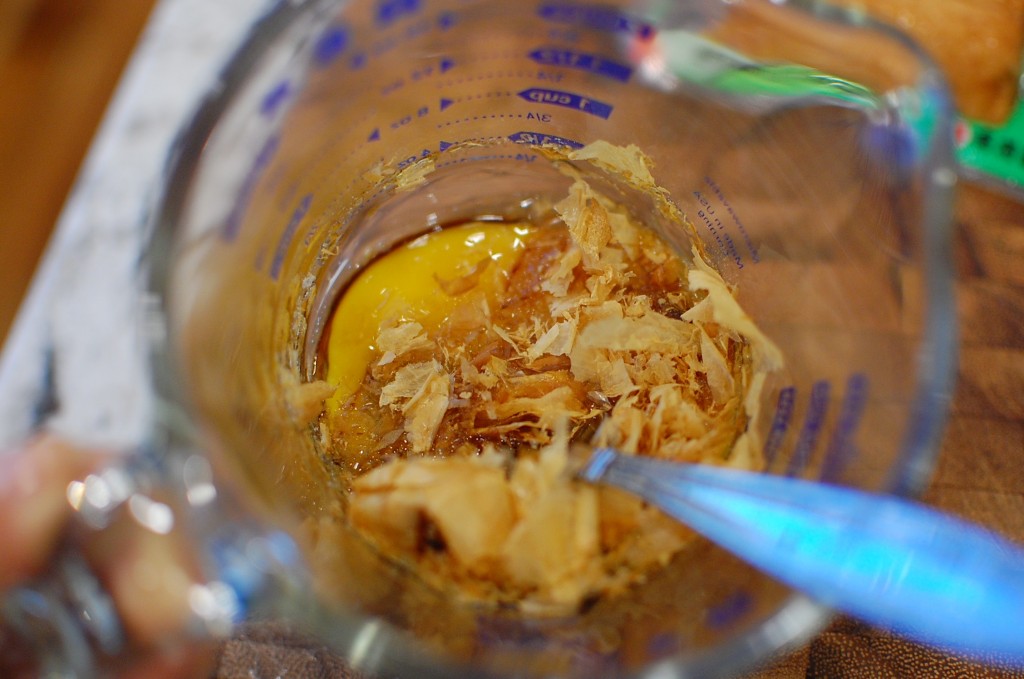
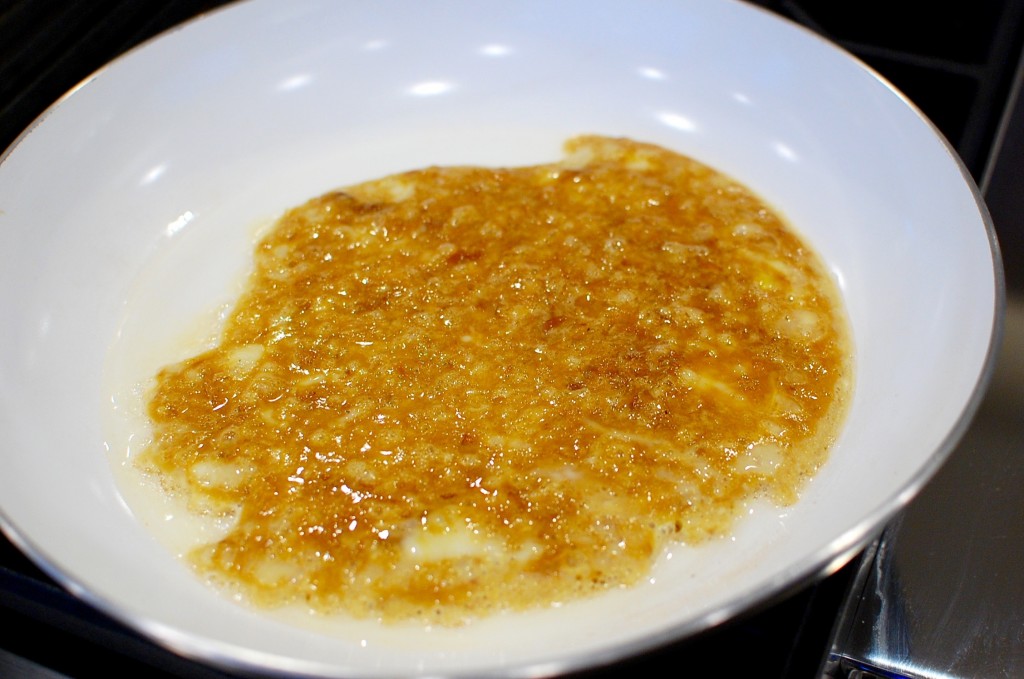
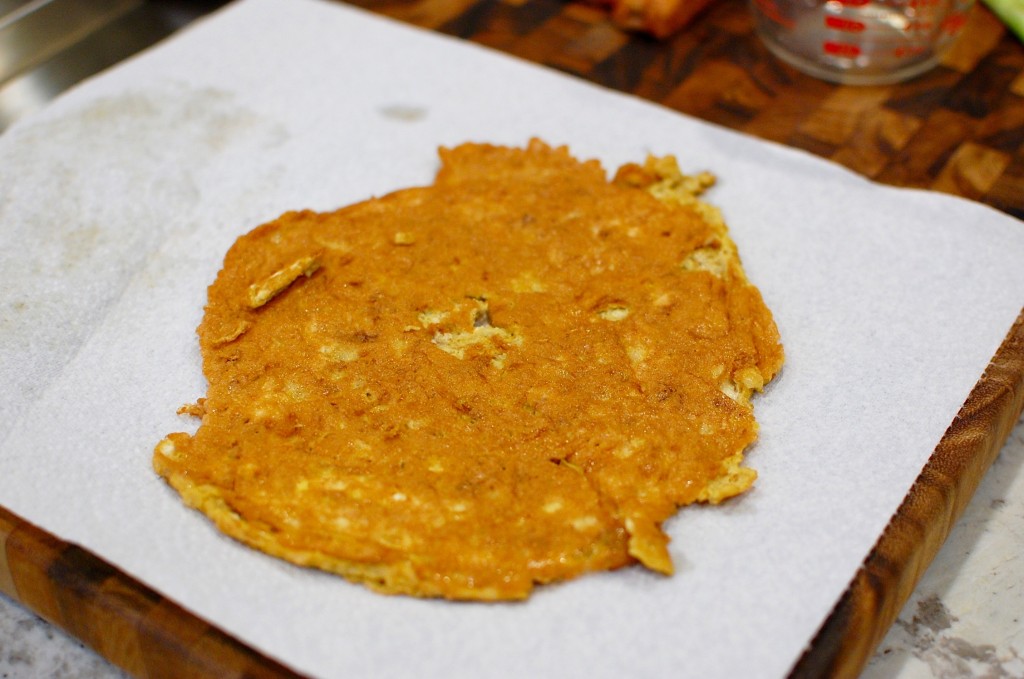
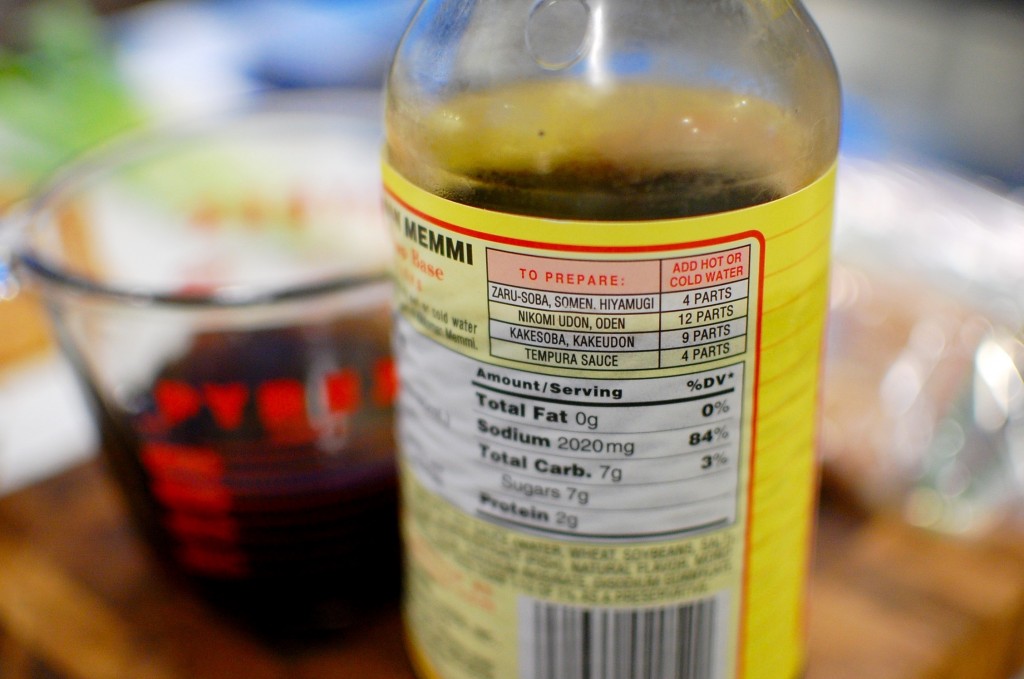
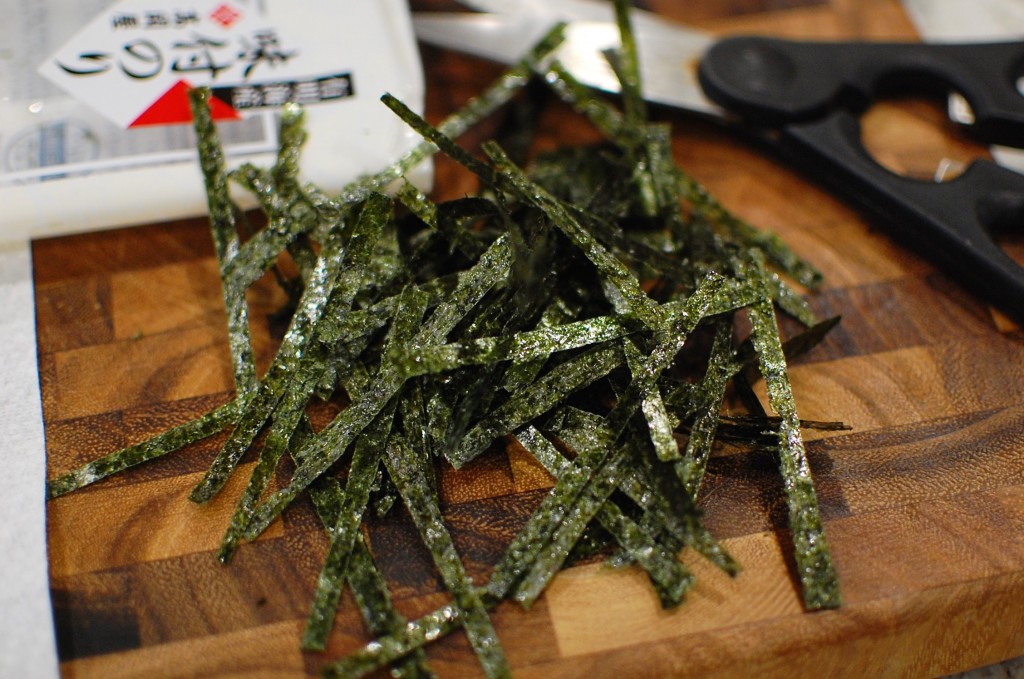
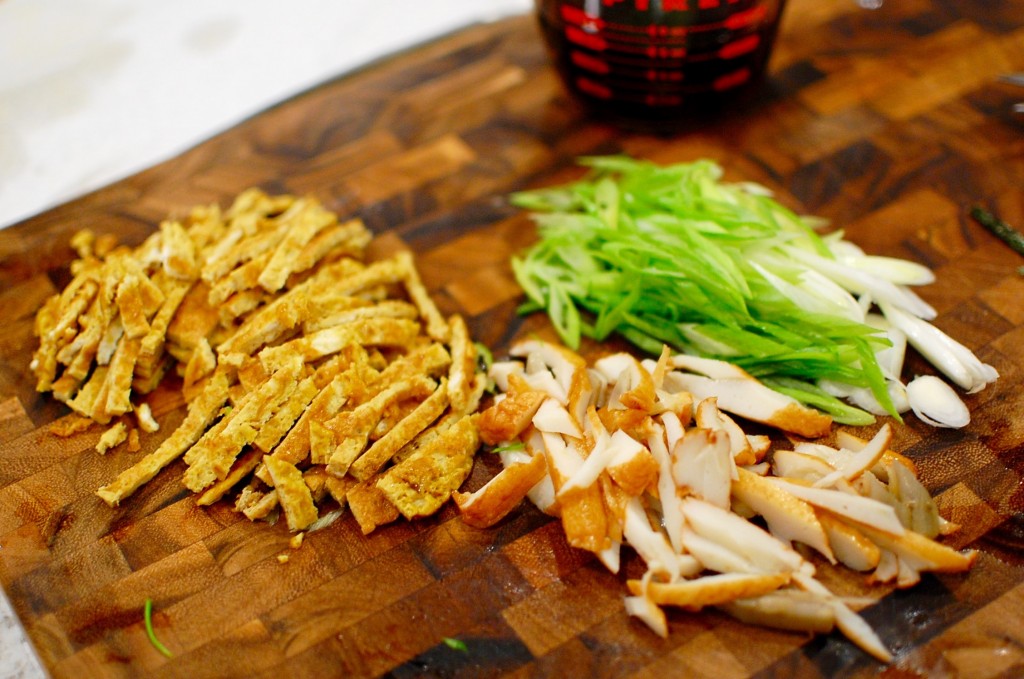
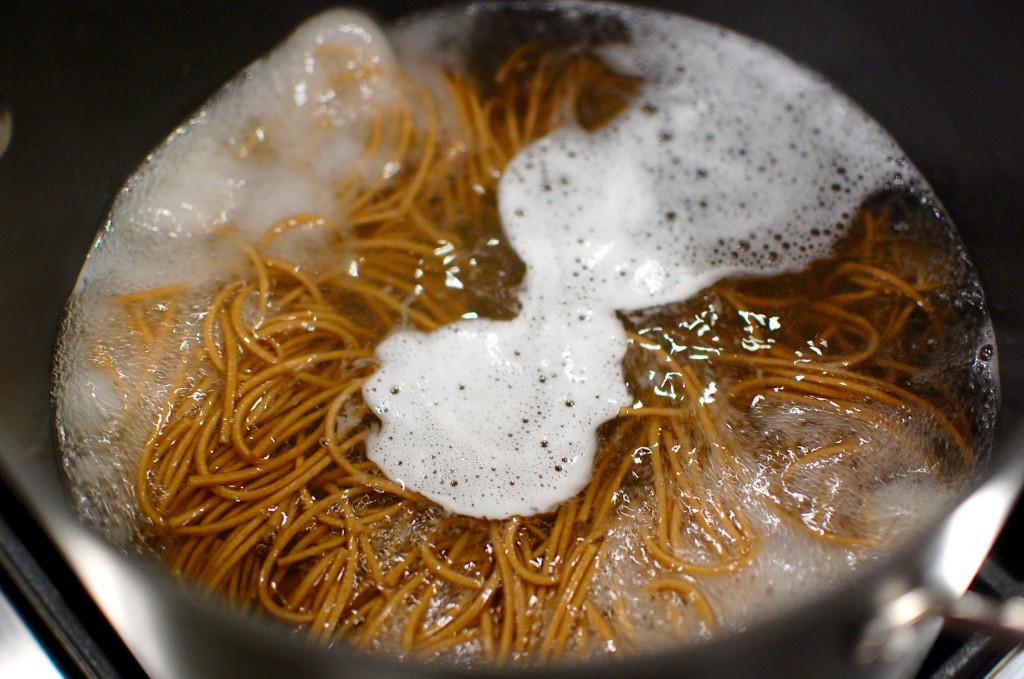
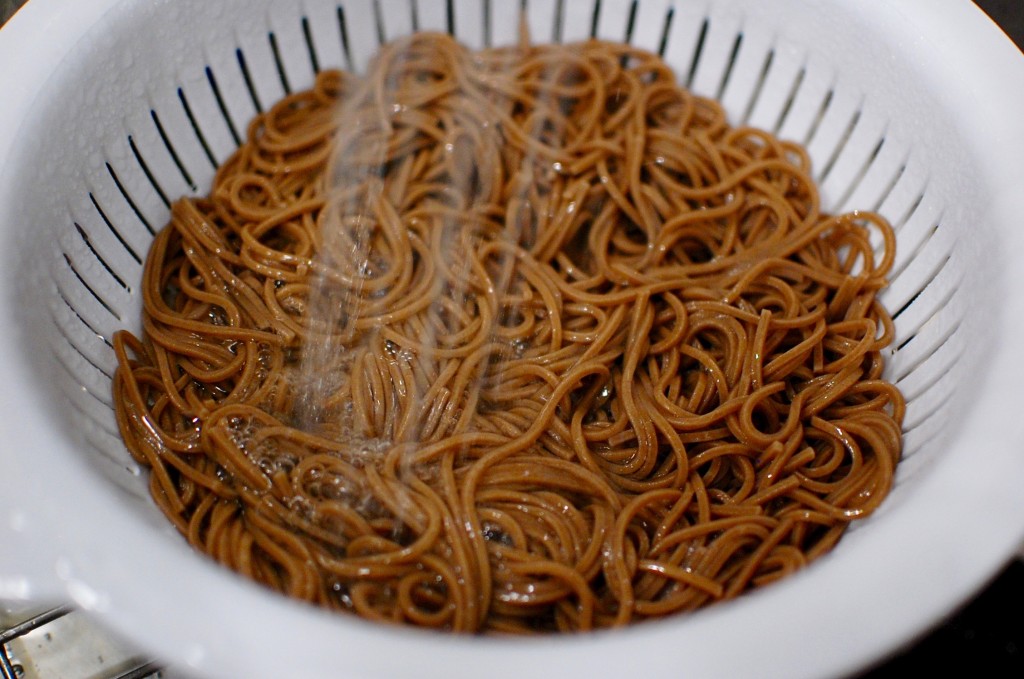
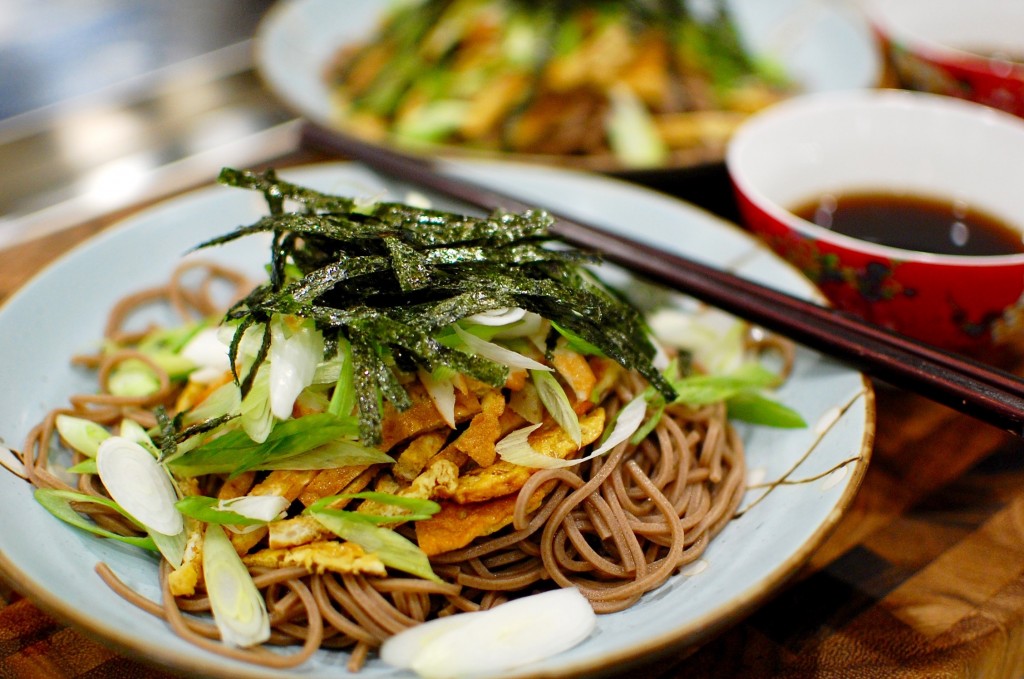


Hi Mika,
Really like the zaru soba recipe you post. It has more ingredients than some of the Japanese restaurants offer near where I live. I especially like to add a raw egg on top. Thanks.
KP Kwan
You’re welcome! This is my way to eat it… everyone has their own favorite toppings, but I love egg on Zaru Soba!
Hah. I see you gave in and bought the phillips pasta machine. Have you tried to make any asian noodle with in. Do you have any recipe on how to make a bowl of ramen.
No, I haven’t tried to make any Asian noodles yet. But it’s on my list! I’m a bit disappointed because it looks like in Asia, they sell “Asian noodle” attachments that aren’t sold here in the US… I’m hoping they make those discs available in the US at some point.
I bought the machine a while back but still haven’t use it yet. (too lazy to read the manual). That will be my next cooking project . My friend and I were talking about ramen yesterday and she mentioned that it cost her 11$ for a bowl with just a few slice of meat and an egg. She always has to pay extra for the meat. Being a cheapskate that I am , I told her that I will figure out how to cook homemade ramen next time we meet. ( well , I’m enlist your help to help me fulfill my promise. ). I was looking for a udon/ramen phillips pasta disc and through Williams-Sonoma site I read your review. I’m surprise they don’t market the Asian noodle disc in America. We sure have enough Asian population for the market. I hope they will make it available here soon because Asian noodle is more of my diet staple than pasta . Plus, I would love to be able to make Asian noodles home since I heard quite a few horror story about dried Asian noodle. One time my mom found a mice stuck in the dried Asian noodle package. Gross. Still, no choice, still have to continue buying it. So far no second incident yet. But still.. LOL
I 100% agree with you! Why not market the Asian discs in the US??? I wish they would. I have hope because they did start to market a separate disc set for other sized Western style noodles… just no ramen/udon discs yet! Tell me how you like the machine… I think the pasta it produces is really nice and fresh, and if you look at the ingredient cost… much better than buying dried pasta for the $.